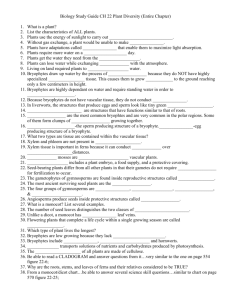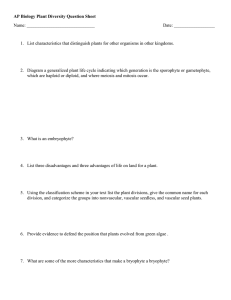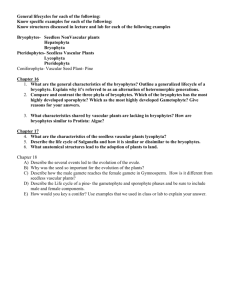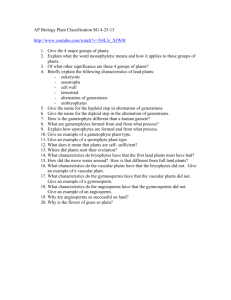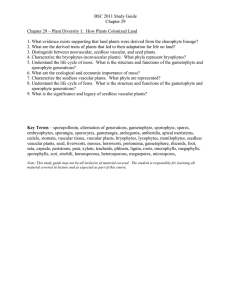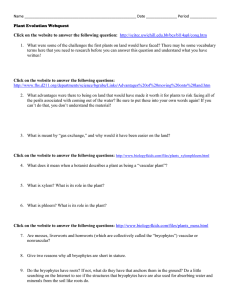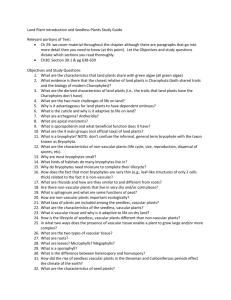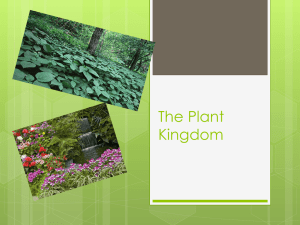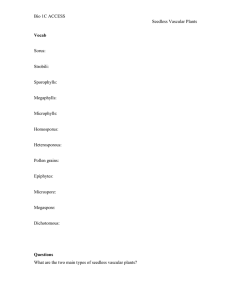Plant Diversity I: The Colonization of Land
advertisement
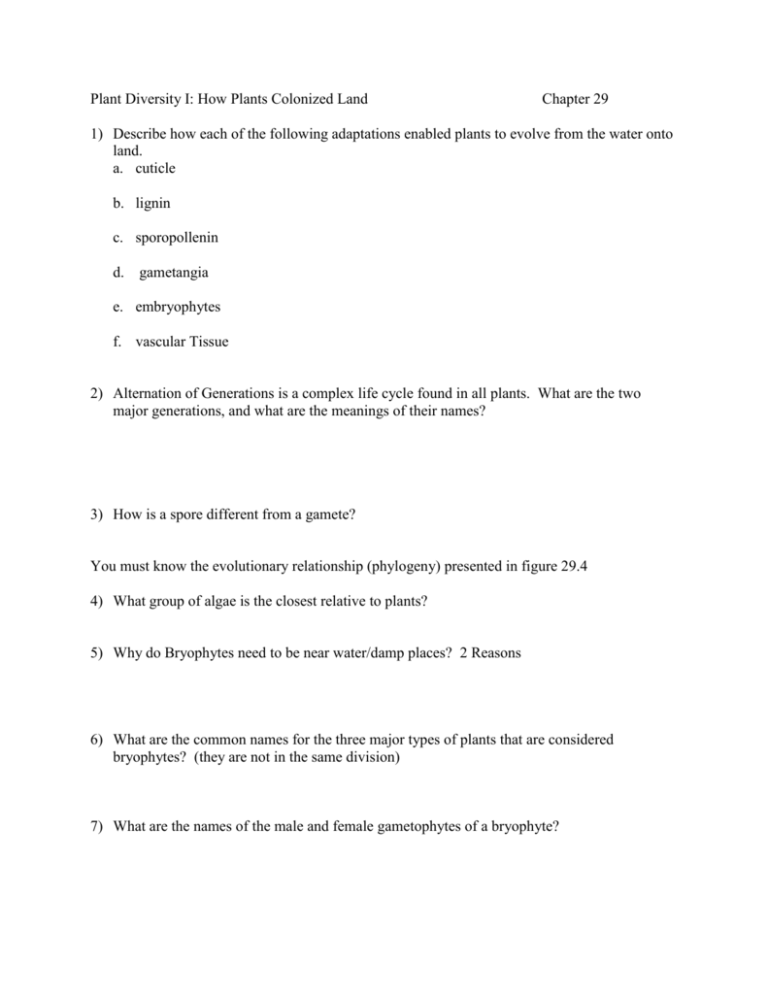
Plant Diversity I: How Plants Colonized Land Chapter 29 1) Describe how each of the following adaptations enabled plants to evolve from the water onto land. a. cuticle b. lignin c. sporopollenin d. gametangia e. embryophytes f. vascular Tissue 2) Alternation of Generations is a complex life cycle found in all plants. What are the two major generations, and what are the meanings of their names? 3) How is a spore different from a gamete? You must know the evolutionary relationship (phylogeny) presented in figure 29.4 4) What group of algae is the closest relative to plants? 5) Why do Bryophytes need to be near water/damp places? 2 Reasons 6) What are the common names for the three major types of plants that are considered bryophytes? (they are not in the same division) 7) What are the names of the male and female gametophytes of a bryophyte? 8) How can you identify the sporophyte of a moss? 9) What two factors limit the height of bryophyte growth? 10) What are the two types of vascular tissue, and what are their functions? 11) Why are ferns mostly found in damp habitats? 12) What are the three major types of seedless vascular plants? 13) What are “fiddle-heads” and “fronds”? 14) What are “sori”? 15) Where (and when) did most of the coal we use today come from? Plant Diversity II: The Evolution of Seed Plants 1) How have plants changed the atmosphere and climate of Earth? Chapter 30 2) What truly distinguishes seed plants from seedless vascular plants? (Use the term gametophyte) 3) What are the 3 parts of a pollen grain? Describe their functions. 4) What is an ovule? 5) How do angiosperm and conifer sperm differ from bryophytes & ferns? 6) What is a gymnosperm? 7) Which group of gymnosperms only has one extant (still living) species? 8) What is the term for a specialized reproductive leaf on a gymnosperm? 9) Label the above diagram 10) What are the four major parts of a flower, and what are their functions? 11) Draw and label a complete flower. 12) What is a fruit? 13) What are the six differences between monocots and dicots?” (figure 30.12) 14) Why is the loss of plant biodiversity a major concern?
